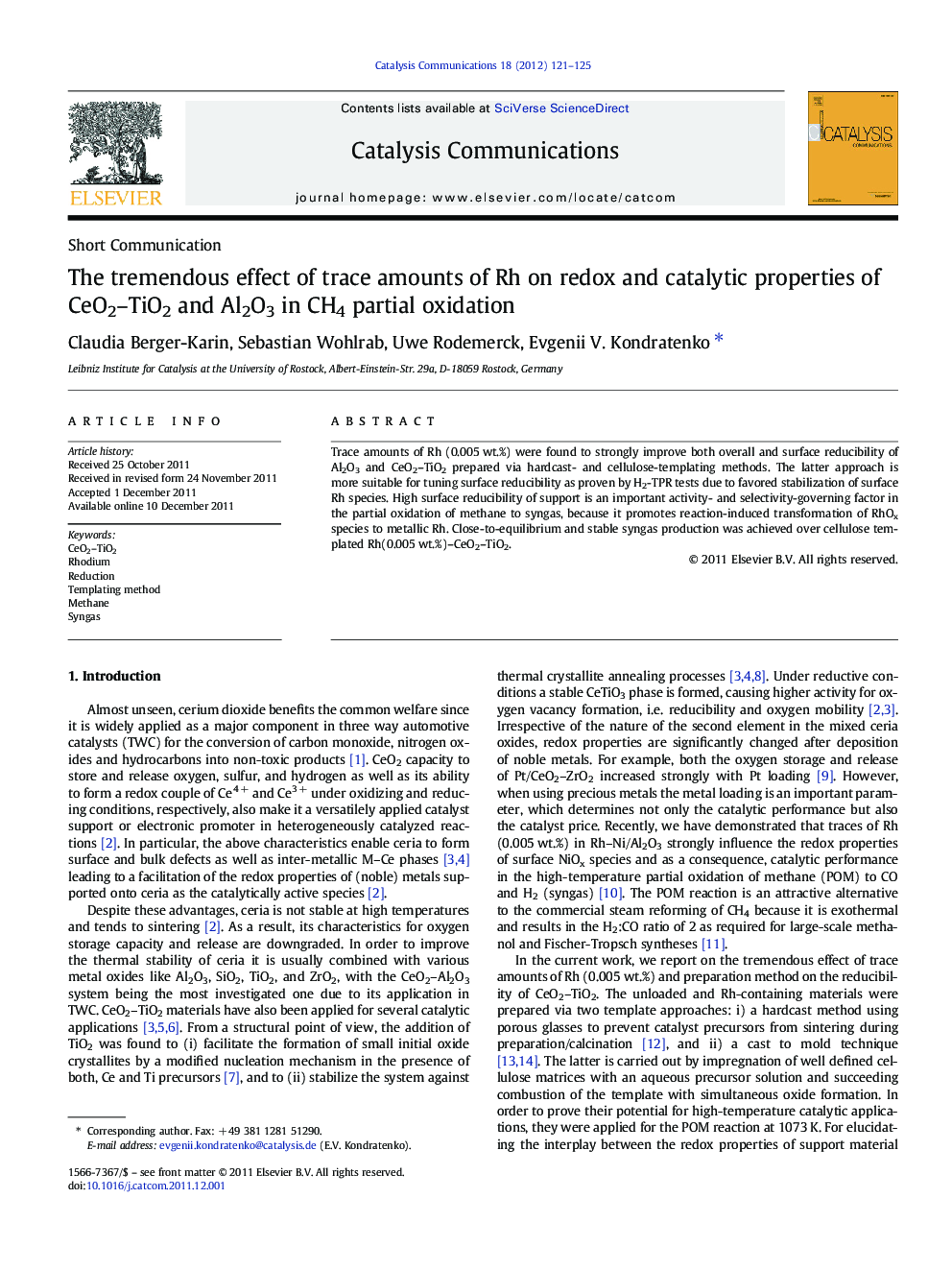| Article ID | Journal | Published Year | Pages | File Type |
|---|---|---|---|---|
| 50094 | Catalysis Communications | 2012 | 5 Pages |
Trace amounts of Rh (0.005 wt.%) were found to strongly improve both overall and surface reducibility of Al2O3 and CeO2–TiO2 prepared via hardcast- and cellulose-templating methods. The latter approach is more suitable for tuning surface reducibility as proven by H2-TPR tests due to favored stabilization of surface Rh species. High surface reducibility of support is an important activity- and selectivity-governing factor in the partial oxidation of methane to syngas, because it promotes reaction-induced transformation of RhOx species to metallic Rh. Close-to-equilibrium and stable syngas production was achieved over cellulose templated Rh(0.005 wt.%)–CeO2–TiO2.
Graphical abstractFigure optionsDownload full-size imageDownload as PowerPoint slideHighlights► Rh traces (0.005wt%) effect surface and/or bulk reducibility of Al2O3 and CeO2–TiO2. ► Preparation method determines concentration of active Rh surface species. ► Lowest surface reduction temperature via cellulose templating. ► Improved bulk reduction via exo templating. ► High surface reducibility is required for partial oxidation of CH4 to CO and H2.
